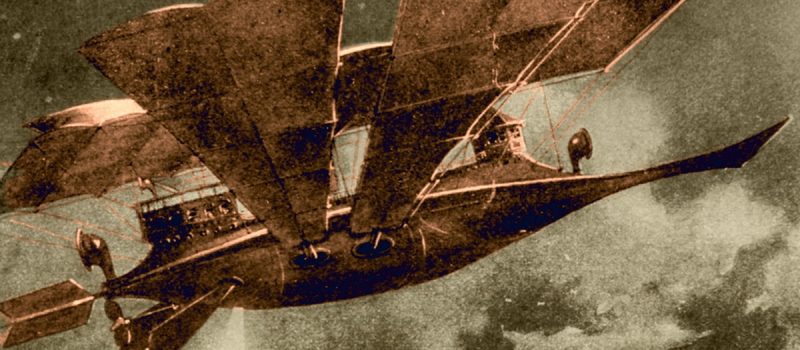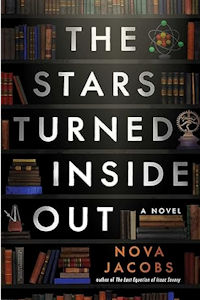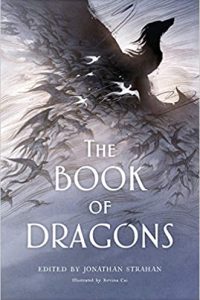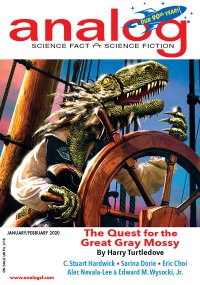Russell Letson Reviews The Dark Ride: The Best Short Fiction of John Kessel by John Kessel
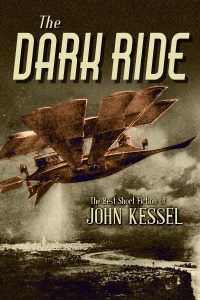 The Dark Ride: The Best Short Fiction of John Kessel, John Kessel (Subterranean Press 978-1-64524-058-7, $45.00, 582pp, hc) June 2022.
The Dark Ride: The Best Short Fiction of John Kessel, John Kessel (Subterranean Press 978-1-64524-058-7, $45.00, 582pp, hc) June 2022.
I love big career-retrospective single-author collections, especially when the author provides notes on genesis and biographical context. John Kessel’s turn has come with The Dark Ride, a gathering of 20 stories from 1981-2021 that shows his command of a wide range of motifs and styles and his recurring concerns in our field and beyond. It adds up to a map of a career that has been interestingly consistent over the four decades covered.
Kessel is a sure-enough science fiction writer, but he is also a (now retired) professor of literature. In fact, he writes, “My career, in retrospect, has been to cross the sensibilities of literary fiction with those of pulp fiction….” The work that emerges from this dual perspective is a bracing mixture of “genre” and “mainstream” sensibilities, themes, and techniques. I would count maybe a half-dozen of these selections as straight-up SF, often with a strong dose of the satirical-dystopian pattern that Kingsley Amis called the “comic inferno.” But despite his clear affection for classical SF, in Kessel’s hands its materials and machineries get pushed around, turned around, interrogated, ironized, mashed up with modernist takes, and generally transformed into shapes that serve Kesselian agendas, aesthetic, political, and personal.
Thus, when he wrote a story for an anthology of space opera stories (The New Space Opera 2, ed. by Gardner Dozois & Jonathan Strahan), what came out was “Events Preceding the Helvetican Renaissance,” an exercise in space operatics inspired by, of all things, Ezra Pound’s proposal to end WWII by trading Guam for a set of Nōh plays. Kessel also calls “Buddha Nostril Bird” a space opera, but (as the title and his note signal) it’s way stranger than that. In fact, I’d say that the science-fiction-y bits are set dressing (AKA furniture) for a loopy, irreverent, one-damn-thing-after-another parable about philosophical posturing. (The punchline depends on a particular physical posture, which I would like to think is a deliberate, sneaky pun.)
Kessel’s time travel stories are closer to the SF mainstream, though the trope-set gets two strikingly different treatments. “Some Like It Cold” and “The Miracle of Ivar Avenue” feature future talent scout (or procurer) Detlev Gruber, who recruits show-biz talents from alternate versions of his past so they can have extended careers in his timeline. The Detlev stories also show Kessel’s love of screwball comedies and detective fiction (“Miracle” features Preston Sturges and a tough LA cop) as well as history in general (to which we will return). I would happily read a straight-up murder mystery by Kessel, should he ever want to write one with more passages like this, Detlev in a 1962 Los Angeles nightclub:
A thin white guy with a goatee strangled his saxophone: somewhere in there might be a melody. These cutting-edge late moderns thought they had the future augured. The future would be cool and atonal, they thought. No squares allowed. They didn’t understand that the future would be like the present, would be dominated by saps, and the big rush of 2043 would be barbershop quartets.
“The Pure Product” is a different matter altogether, with a bored, nihilistic time-traveling tourist leaving a trail of arbitrary mayhem on his wanderings, notably tossing a Molotov cocktail at a passerby. The story’s pivot is a hectoring speech the narrator delivers to an increasingly terrified hitchhiker:
Think of the violent reactionary movements that could arise – are arising already, Milo, as we speak – from people’s desire to find something to hold on to. Paint yourself a picture, Milo, of the kind of man or woman another hundred years of this process might produce!” […] “And you, Milo, are at the heart of this process! […] ARE YOU LISTENING, MILO? MARK MY WORDS!”
This rant is an example of a common element in Kessel’s rhetoric of fiction, what Kim Stanley Robinson in his introduction calls the “epiphanic” passage, “when one character suddenly speaks to another in a hieratic way, in a pronouncement or revelation,” and once it has been pointed it out, it’s impossible to miss. (Examples to follow.)
The longest story in the volume, “Stories for Men”, fits the “comic inferno” model – an inversion of some social-economic-political assumptions or givens that play out to satirical or didactic effect. It is also studded with variations on the epiphanic speech, mostly from a men’s-liberation rabble-rouser. Nevertheless, despite its solidly worked-out lunar-environment setting and the systematic parsing of gender-role questions, “Stories for Men” strikes me as a bit schematic. (Though to be fair, it found its way into a novel, The Moon and the Other, that provides a number of perspectives.)
Perhaps the straightest of straight-SF stories is “Clean”: built on a single speculative idea (a treatment for Alzheimer’s that removes layers of personal memory in order to save the person), it is also a portrait of familial relations, in this case of a distant and eventually dementia-diminished husband, an exhausted and exasperated wife, and a daughter who must navigate these domestic shoals and reefs. This is one of the non-genre threads that runs through these stories: parents and children, and especially the reconstruction of family history. It also has one of the book’s neatest and most moving structures, beginning and ending in the father’s workshop.
Speaking of workshops, “Spirit Level” (one of the most evocative titles in a volume of cleverly-titled stories) features a lovely and dead-accurate catalogue of the contents of a garage workshop:
bottles of solvent, several shelves of old paint cans with the colors dripped down over the labels, shop rags, C-clamps, a pipe clamp, jelly jars full of metal screws, wood screws, and nails of various sizes… a welding helmet, the snowblower, three dented aluminum trash barrels, half a case of Genesse cream ale from forty years ago.
This is not SF but a story of family memories and regrets crossed with a kind of ghost story – except the ghosts are not of the dead, and it is not clear exactly what their nature might be. (Kessel’s note cites Henry James’s “The Turn of the Screw” as a model.)
In fact, the most striking side of Kessel’s work comes from the blurring of lines: between genre and “literary” techniques and tropes; between actual and speculative history; between fiction and memoir – or all these lines at once. One trademark is stories that put SF tropes on collision courses with non-genre machineries and techniques. Sometimes this operates by subtraction. “The Motorman’s Coat” has an entire science-fictional back-story present only in hints and flashes, and the “The Closet” is all effect with no explanation or justification/framework at all. As a result, both are pushed in the direction of parable or allegory. Then there’s “The Lecturer”, an example of what I have elsewhere called the “naked fantastic”: stories in which the impossible is presented without any framework of genre conventions or explanations. This is the territory of literalized metaphors and imaginary landscapes, of Borges’s “The Library of Babel”, of Pirandello, of Kafka (in whom Kessel has a particular interest).
For this former English teacher, though, there’s a special appeal in the stories that revisit, extend, or redesign historical moments or literary classics. “Invaders” deploys most of this armamentarium as it alternates a (fictionalized) straight-historical depiction of the conquest of the Incas with comic-inferno SF segments about drug-addled alien visitors in the 21st century, both of which are interrupted by sections labeled “Today” (1990 when the story was published) in which the author in propria persona breaks the fourth wall to discuss what the rest of the story is doing.
Kessel also speaks directly to the reader in “Buffalo”, which fictionalizes his own family history by imagining a 1934 meeting between his father, working for the Civilian Conservation Corps, and H. G. Wells. It’s a meditation on aspirations and constraints and work and hope and ends with an authorial address to the audience and a reflection about the possibilities offered by art: that it doesn’t have to deliver a message in order to say something important. That art isn’t always a means to an end but sometimes an end in itself. That art may not be able to change the world, but it can still change the moment.
The big three of this part of the book are revisionings of and meditations on literary classics. “Pride and Prometheus” is the Nebula-winning Jane Austen/Mary Shelley mashup novelette that was later expanded into the even more impressive novel of the same title. “Gulliver at Home” also brings the fantastic into the ordinary world, as Mrs. Gulliver has to cope not only with her wandering husband’s long absences but with the psychological effects his travels wrought, particularly the despair generated by how he comes to see human nature: “his heart has been beaten closed, not only by the sea and the storms and the mutinies and the pirates, but by some hard moral engine inside him.”
Kessel’s earlier Nebula winner, “Another Orphan”, is a more radical reworking of its inspirational material, dropping a modern commodities trader onto the Pequod and the events – and philosophical riddles – of Moby-Dick. In one of those epiphanic speeches, Ahab says to him, “Admit that this is not the tale you think it is! … Admit that we are both free and unfree, alone and crowded in by circumstance in this world that we indeed did not make….”
The last story in the book is the most recent. “The Dark Ride” mixes history with a kind of literary reconstruction, as the historical Leon Czolgosz not only assassinates President McKinley but also has adventures out of Wells’s First Men in the Moon. Questions of social justice and radical revolutionary action crisscross the two story lines, but, as with “Another Orphan”, there is no explanation for the protagonist’s displacement, nor is there a conventional resolution. And this latter is what strikes me as the most non-genre feature of Kessel’s work: that a story does not need that snap of a plot-machine closing, nor do fantastic events require rational explanations – lines drawn under a set of actions, morals drawn, endings arranged happily. As Ahab might put it to some displaced and desperate not-really-Ishmael, these are not the tales we might think they are. Nevertheless, they can make the ride a bit less dark.
Russell Letson, Contributing Editor, is a not-quite-retired freelance writer living in St. Cloud MN. He has been loitering around the SF world since childhood and been writing about it since his long-ago grad school days. In between, he published a good bit of business-technology and music journalism. He is still working on a book about Hawaiian slack key guitar.
This review and more like it in the July 2022 issue of Locus.
 While you are here, please take a moment to support Locus with a one-time or recurring donation. We rely on reader donations to keep the magazine and site going, and would like to keep the site paywall free, but WE NEED YOUR FINANCIAL SUPPORT to continue quality coverage of the science fiction and fantasy field.
While you are here, please take a moment to support Locus with a one-time or recurring donation. We rely on reader donations to keep the magazine and site going, and would like to keep the site paywall free, but WE NEED YOUR FINANCIAL SUPPORT to continue quality coverage of the science fiction and fantasy field.
©Locus Magazine. Copyrighted material may not be republished without permission of LSFF.


